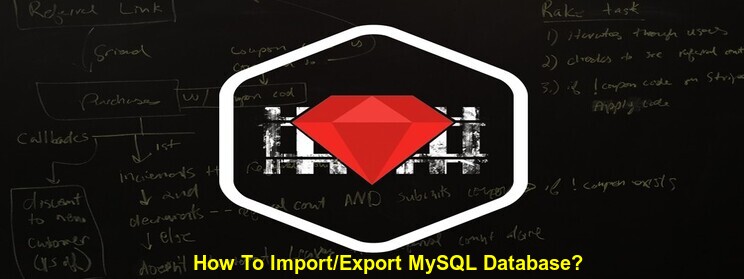Real-time’s Framework is a blindingly fast bi-directional persistently connected messaging system. It’s a unique means for a company to conduct a live online relationship with clients.
This has the massive advantage of allowing interaction to happen live in real-time, without delays or page refreshes, to create a durable and bidirectional relationship with each online user.
It works with two main components:
Enabling the live web is ORTC (Open Real-time Connectivity): A secure, fast and highly scalable cloud-hosted real-time many-to-many messaging system for web and mobile apps.
Here we can use ORTC client instead of xRTML code snippet provided by realtime.co for real-timeconnections.
The language of the Live Web s xRTML (Extensible Realtime Multiplatform Language): A set of api tools to build realtime web and mobile apps with an easy to use API based on a JavaScript library.Pas: Include this js plugin http://dfdbz2tdq3k01.cloudfront.net/js/2.1.0/ortc.js
For Sending Messages to Realtime:window.onload = function () {
loadOrtcFactory(IbtRealTimeSJType, function (factory, error) {
if (error != null) {
alert(“Factory error: ” + error.message);
} else {
if (factory != null) {
// Create ORTC client
var ortcClient = factory.createClient();
// Set ORTC client properties
ortcClient.setId(‘clientId’);
ortcClient.setConnectionMetadata(‘clientConnMeta’);
ortcClient.setClusterUrl(‘http://ortc-developers.realtime.co/server/2.1/‘);
ortcClient.onConnected = function (ortc) {
// Connected // First Channel
ortcClient.subscribe(‘channel1’, true, function (ortc, channel, message) {
console.log(message)
ortcClient.unsubscribe(channel);
});
// Second Channel
ortcClient.subscribe(‘channel2’, true, function (ortc, channel, message) {
console.log(message)
ortcClient.unsubscribe(channel);
});
};
ortcClient.onDisconnected = function (ortc) {
// Disconnected
}; //Send your messages here
ortcClient.onSubscribed = function (ortc, channel) {
// Subscribed to the channel ‘channel’);
ortcClient.send(channel, ‘Message to the channel’);
};
ortcClient.onUnsubscribed = function (ortc, channel) {
// Unsubscribed from the channel ‘channel’);
ortcClient.disconnect();
};
ortcClient.onException = function (ortc, exception) {
// Exception occurred: ‘exception’
};
ortcClient.onReconnecting = function (ortc) {
// Trying to reconnect
};
ortcClient.onReconnected = function (ortc) {
// Reconnected
};
ortcClient.connect(‘myApplicationKey’, ‘myAuthenticationToken’);
}
}
});
};
For Receiving Messages from Realtime to App Frontend: //Here remove ortcClient.onSubscribed function
window.onload = function () {
loadOrtcFactory(IbtRealTimeSJType, function (factory, error) {
if (error != null) {
alert(“Factory error: ” + error.message);
} else {
if (factory != null) {
// Create ORTC client
var ortcClient = factory.createClient();
// Set ORTC client properties
ortcClient.setId(‘clientId’);
ortcClient.setConnectionMetadata(‘clientConnMeta’);
ortcClient.setClusterUrl(‘http://ortc-developers.realtime.co/server/2.1/‘);
ortcClient.onConnected = function (ortc) {
// Connected // First Channel
ortcClient.subscribe(‘channel1’, true, function (ortc, channel, message) {
console.log(message)
ortcClient.unsubscribe(channel);
});
// Second Channel
ortcClient.subscribe(‘channel2’, true, function (ortc, channel, message) {
console.log(message)
ortcClient.unsubscribe(channel);
});
};
ortcClient.onDisconnected = function (ortc) {
// Disconnected
}
ortcClient.onUnsubscribed = function (ortc, channel) {
// Unsubscribed from the channel ‘channel’);
ortcClient.disconnect();
};
ortcClient.onException = function (ortc, exception) {
// Exception occurred: ‘exception’
};
ortcClient.onReconnecting = function (ortc) {
// Trying to reconnect
};
ortcClient.onReconnected = function (ortc) {
// Reconnected
};
ortcClient.connect(‘myApplicationKey’, ‘myAuthenticationToken’);
}
}
});
};
Conclusive Note:
The Real-time framework is henceforth an emerging and fast growing messaging system which helps the business to serve their clients at a very speedy rate and hence also avoid the time gap of providing the services.
This also gives a competitive advantage to the business, as it is the system, that is suitable for today’s recurrently growing world of business.
En savoir plus :
Une introduction à l'API Rails
Configurer l'environnement Rails
Manipulation d'images
Comment installer Ruby sur Rails
Prenez contact avec nous.Lubaib C J
Développeur senior Ruby on Rails





